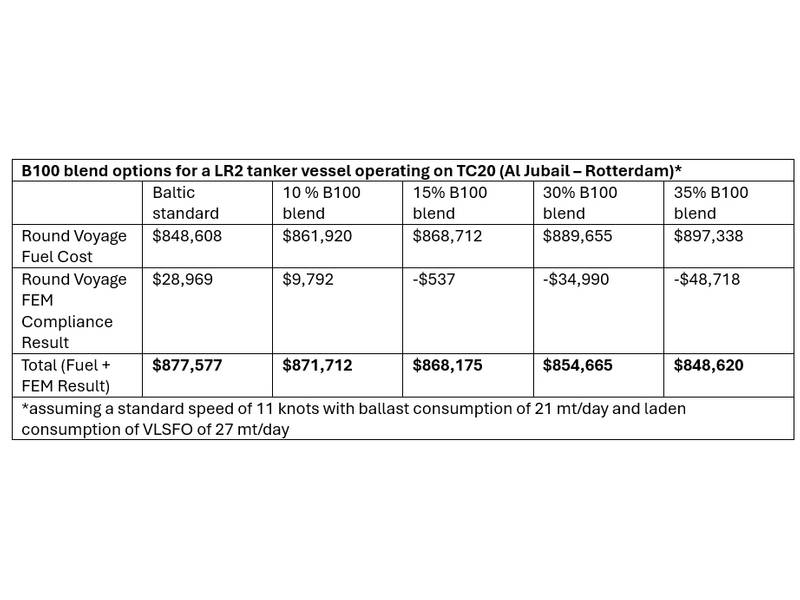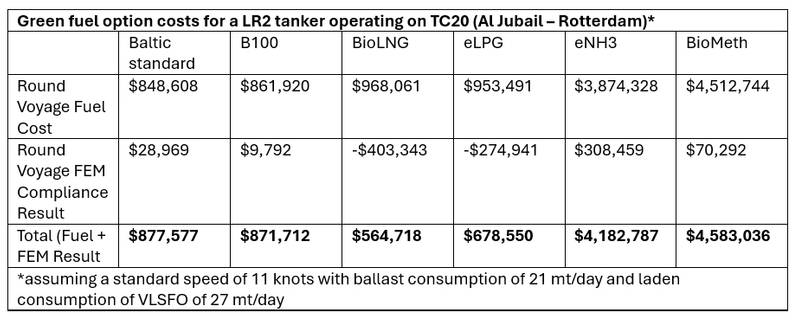Baltic Exchange adds Green Fuel Options to Cost Calculator
Baltic Exchange introduced a series of green fuel options to its FuelEU voyage and compliance cost calculator as more shipowners, traders and charterers seek to understand the commercial implications of this regulation on their voyage costs.
Biodiesel, bio-LNG, bio-LPG, green methanol, green hydrogen and green ammonia have all been added to the calculator, either as green fuel or blend options. Baltic Exchange’s FuelEU Maritime calculator provides an overview of the cost implications for the selected option relative to the Baltic standard for that route. This will enable the market to factor any change in fuel selected or contemplated into their voyage cost estimates.

These results of the calculations are all presented relative to the Baltic standard ship and route types, which is generally considered to be burning VLSFO in navigation outside ECA and MGO for waiting and port consumption. The output from these calculations shows the cost differential for the fuel under consideration with the entered speeds and consumptions of the test ship versus the market standard.
For example, a 115,000 dwt LR2 clean tanker operating on the TC20 Baltic route (Al Jubail – Rotterdam), assuming a standard speed of 11 knots with ballast consumption of 21 mt/day and laden consumption of VLSFO of 27 mt/day, stands to save nearly $30,000 in fuel costs if using a 35% B100 blend option.
Despite an increase in overall fuel costs, the amount saved for being in compliance with the FuelEU Maritime regulation will offset those costs and provide additional savings compared to burning purely VLSFO.
According to Baltic Exchange’s FuelEU Maritime Calculator, in this example, the vessel stands to save increasing amounts of costs on fuel as the ratio of biodiesel to VLSFO increases.
In addition, the table below shows the voyage cost outcomes for the same vessel and route depending on which green fuel is blended into VSLFO at 10%. These calculations are made with the assumption that these green fuels cost twice as much as their fossil-derived versions, which make up the remainder of the fuel burned on the round voyage.

In this example, bioLNG offers the most cost-effective option as a fuel blend. While it has a higher overall cost compared to ePLG or B100, the FuelEU Maritime-related savings of using bioLNG results in more than $400,000 in overall cost savings.
“With the latest update to Baltic Exchange’s FuelEU Maritime Calculator, users now have the ability to experiment with any green fuel blend percentage taking into account the assumed green fuel cost premium and the expected well-to-tank emissions profile for the specific green fuel blend selected,” said Martin Crawford-Brunt, Emissions Lead at Baltic Exchange. "“Regulations like FuelEU Maritime and EU ETS will become increasingly impactful on voyage costs to and from the EU. All contracting parties, their brokers and traders need to be able to estimate these additional costs quickly to avoid facing high financial penalties."
